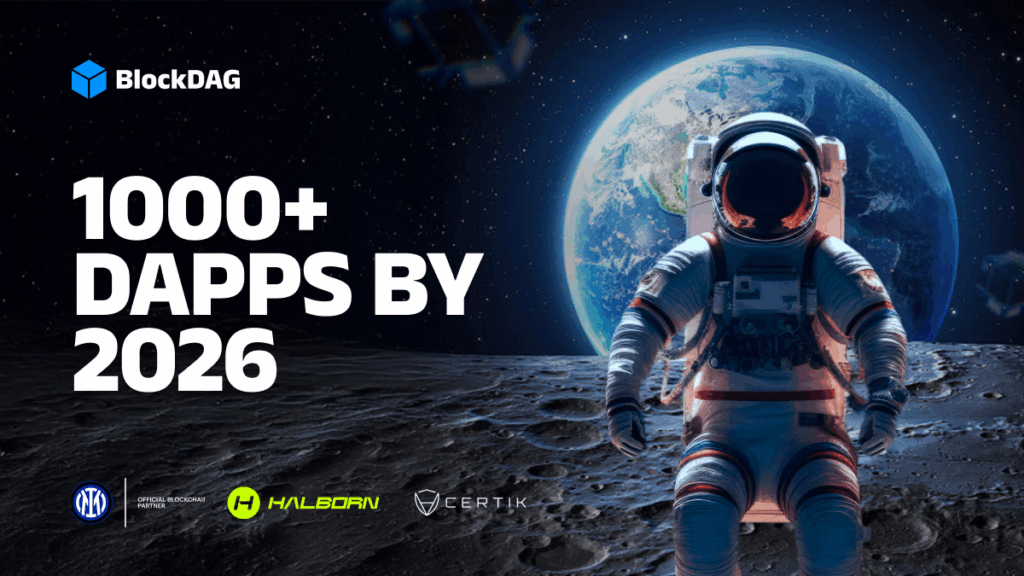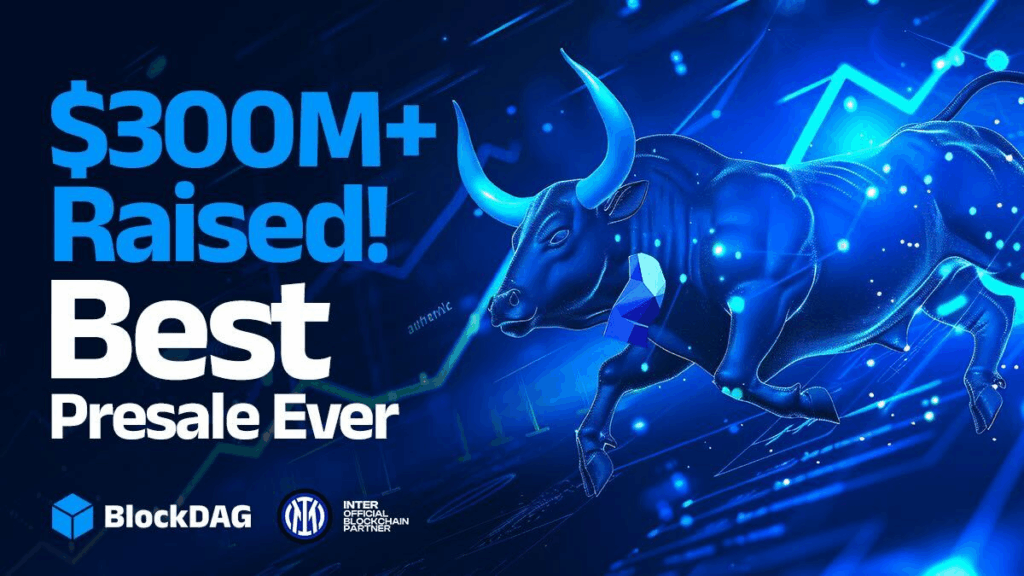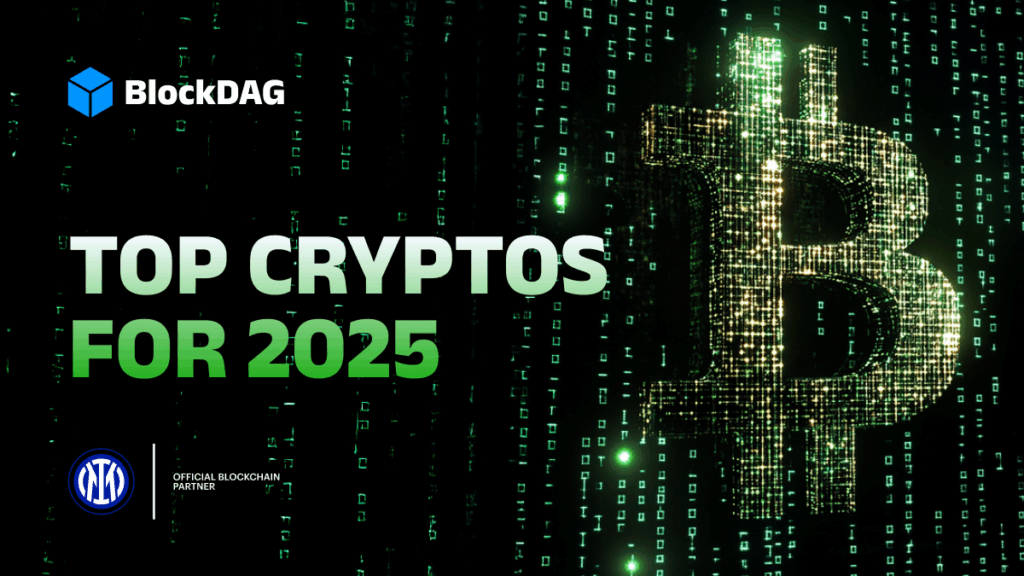Many Layer 1 projects claim they’ll dominate the market, but few prove their appeal to developers before listings begin. BlockDAG is one of the rare exceptions. With its testnet already live, no-code builder in action, and developer grants active, the project has outlined a clear goal: to host 1,000 dApps by 2026.
This isn’t just another roadmap promise. These tools are functional, and developers are using them now. While many buyers chase price pumps, BDAG backers are getting in early, before network usage drives up prices. With over $324 million raised and 23.3 billion coins sold, BlockDAG (BDAG) is no longer just a theory. It’s a network being built from the ground up, with developers already plugged in. For a space driven by hype, this kind of builder momentum is rare, and it could be a signal of what’s ahead.
From Plans to Actionable Developer Tools
While most Layer 1s share vague development timelines, BlockDAG has already activated its infrastructure. Its testnet is up and running. A no-code smart contract builder is available. And real developers are already testing smart contract functions on a system that mirrors the mainnet.
The no-code builder is simple to use, letting users drag and drop to create contracts without writing code. Meanwhile, developers are pushing their limits, identifying bugs and optimising throughput long before launch.
This hands-on phase sets BlockDAG apart from many presales. Instead of waiting to build after the listing, teams are working now. It’s a path more aligned with Solana’s 2021 dev boom than with speculative launches. But here’s the twist: BlockDAG’s coin hasn’t hit exchanges yet.
These tools create an ecosystem ready to launch, not just promised. That’s the difference. While others are still outlining intentions, BlockDAG is giving developers what they need upfront. The traction isn’t staged. It’s already happening.
Building Toward 1,000 dApps: A Practical Approach
Announcing big dApp goals is easy. Achieving them requires real support.
BlockDAG has committed to reaching 1,000 dApps by 2026, using structured campaigns to get there. Public grants, hackathons, and onboarding incentives are part of a wider strategy that unfolds during the six-week launch timeline.
The team is following a proven model. Like Ethereum’s early phase, they’re building with developers first, letting apps attract users organically. Each dApp brings its audience. Each transaction burns BDAG. As DeFi infrastructure takes shape and exchange listings go live, the usage will already be there.
Currently, BDAG’s special price is $0.0030, well below the confirmed $0.05 listing. But this price will only last for 12 more hours after which it will increase to $0.0080. That’s a projected ROI of 1500%. But more than price, the value lies in getting access before gas fees and demand spike.
Other Layer 1 chains like Solana and Avalanche saw surges after dApps launched. Early participants benefited from cheap fees and first access. BlockDAG is setting up for a similar scenario, with no venture capital control in sight.
Developer Tools, Grants, and Early Testing
Grants are live and targeting early-stage teams. BlockDAG’s low-code and no-code setup lowers entry barriers for small groups and solo builders. Even Web2 teams can join without blockchain experience.
It’s not just shiny apps either. The roadmap includes serious tools, DeFi infrastructure, NFT services, real-world payment modules, and backend solutions.
The timing matters. These resources are being built now. That changes the game. By the time trading opens, the ecosystem will be ready:
- The no-code builder helps new users launch quickly.
- The academy educates developers moving from Web2 to Web3.
- The testnet helps optimise performance.
- And the grant system keeps teams engaged.
Compare this with Aptos or Sei. Both launched coins before they had any working ecosystem, leaving buyers waiting. BlockDAG is doing it in reverse, apps before access.
That structure brings confidence. Builders aren’t guessing, they’re shipping. Each new addition strengthens the network before BDAG becomes tradable. And by focusing on usable tools early, BlockDAG avoids the delays that slow most new chains.
The Right Entry Timing, Backed by Progress
So far, BlockDAG has sold 23.3 billion coins and collected over $324 million, without circulating any coins yet. The number of holders is close to 200,000. Meanwhile, more than 18,165 miners have been sold, and the X1 mining app already has over 2 million users.
Yet, the presale price stays at $0.0030 for now, set to climb to $0.0080 soon. The mainnet activates in Week 4 of the 6-week plan, with the airdrop and DeFi stack rolling out by Week 2.
Once the first wave of dApps goes live, BDAG won’t be early-stage; it’ll be a fully built infrastructure. For anyone watching for the next serious Layer 1 project, BlockDAG may be the one to watch.
Presale: https://purchase.blockdag.network
Website: https://blockdag.network
Telegram: https://t.me/blockDAGnetworkOfficial
Discord: https://discord.gg/Q7BxghMVyu
Disclaimer: Any information written in this press release does not constitute investment advice. Optimisus does not, and will not endorse any information about any company or individual on this page. Readers are encouraged to do their own research and base any actions on their own findings, not on any content written in this press release. Optimisus is and will not be responsible for any damage or loss caused directly or indirectly by the use of any content, product, or service mentioned in this press release.



